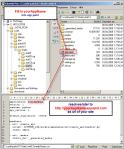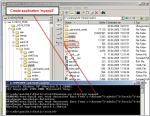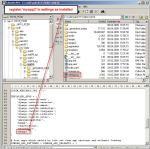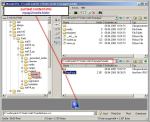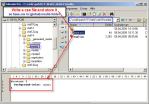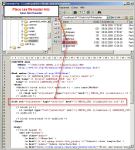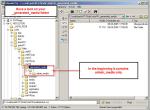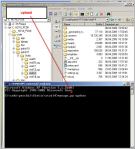Well I decided to take some time off from working with the App-engine-patch and try Native Django,, go more mainstream so I could take advantage of more robust database and tutorials…
I’m using Python 2.62 Win 64 Eclipse 3.4 Ganymede, and trunk SVN Django 1.1
1st, one must install a Mysql driver The one in the “official library won’t work, version differences.. go here for a windows installer for Python 2.6 https://sourceforge.net/forum/forum.php?thread_id=2316047&forum_id=70460 Fwiw I’m using 32 bit versions although there is a 64 bit version available (for both Python and the Mysql driver (lower down on that thread).
You also need to add the following change manually to the Mysqldb code
About warnings:
1) file “__init__”, replace:
from sets import ImmutableSet
class DBAPISet(ImmutableSet):
with
class DBAPISet(frozenset)
2) file “converters.py”, remove:
from sets import BaseSet, Set
3) file “converters.py”, change “Set” by “set” (IMPORTANT: only two places):
line 48: return set([ i for i in s.split(‘,’) if i ])
line 128: set: Set2Str,
I hope this be useful.
Regards,
Luis Moreno
I realized That I had not been documenting myself when I blew up and was about ready to re install and realized I’d have to look every thing up again… Hence back to posting!
One of the most interesting revelations for me recently is how Python “installs” and referrers to packages and extensions. At this point I now think that all the trashing about is a bit too much on many installs. Looking in site-pkges in Libs in the Python directory I noticed several .pth files named for some of the extensions I was installing and using, the file was the module name.pth.. and contained the full path to the module… cool! So that is a mechanism that can be used to create a nice place to keep that stuff without messing up your basic Python install… good to know..
Another major revelation has been the use of revision control systems,,, It seems that it is well worthwhile to have a copy of all of the major systems on your machine. Git, SVN and Mercurial. If you checkout a copy of a system like Django,,, then when you want a update to the current version just do another checkout and your done!
Btw it turns out that even if you use TortoiseSVN as I do it is a good ides to install Silk SVN also because Tortoise does not provide command line access, which is used by some packages for automated installation/updating, in particular Pinax! So even if you don’t want command line you need to have it on your system…
If you use tagging with the 1.0 or latter Django you must use the svn version of tagging ….


